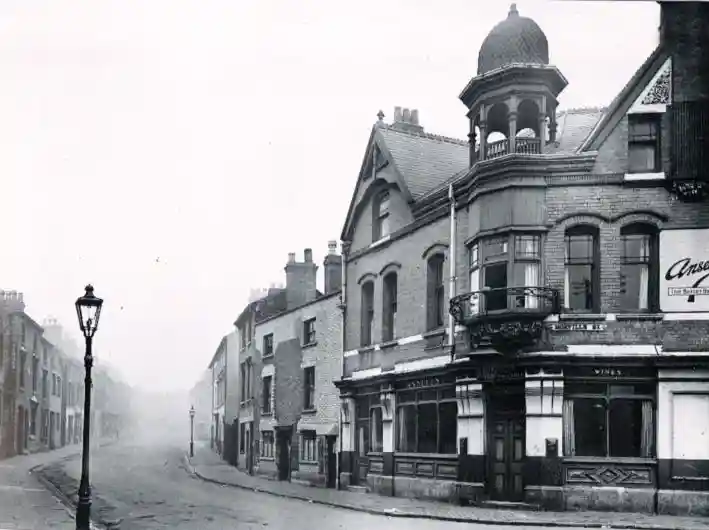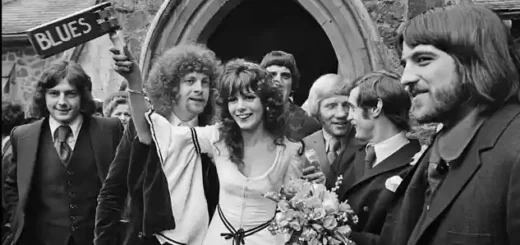The Steam Clock public house, Morville Street, Ladywood
Resulta curioso que lugares que nunca antes hubiesen sido relevantes para casi nadie excepto para quienes vivieron en sus alrededores mientras éstos existieron, hoy toman protagonismo para quienes nunca lo conocimos incluso muchos años después de desaparecer, gracias en este caso, a la portada elegida por JEFF LYNNE para su álbum LONG WAVE…

Fecha: 1859-1899
El bar Steam Clock se encontraba en el número 23 de Morville Street, Ladywood, en el cruce con Sherborne Street, y contaba con una característica inusual, aunque no única: el reloj de vapor del mismo nombre. El edificio, que había sido la casa de John Inshaw, un ingeniero, fue convertido en un pub por su propietario en 1859. Inshaw organizó una exposición de «ingeniosos artilugios mecánicos y modelos de trabajo y realizó numerosos experimentos con vapor, gas y electricidad». Se construyó un reloj de vapor con un arreglo por el que el vapor se condensaba en gotas de agua que caían a intervalos regulares sobre una placa metálica, dando así el impulso necesario a las obras». Una versión completa de este artilugio se instaló en el pub, aunque probablemente hubiera sido prudente utilizar también un reloj convencional. Más tarde se construyó un salón de música con el mismo nombre en la puerta de al lado, del que W.R. Inshaw fue gerente durante un tiempo, y a finales de siglo el propio pub ya no figura en la lista.
ELOSPAIN:
It is curious that places that would never have been relevant to almost anyone except for those who lived in their surroundings while they existed, today take center stage for those of us who never knew it, even many years after it disappeared, thanks in this case to the cover chosen by JEFF LYNNE for her album LONG WAVE…
Date: 1859-1899
The Steam Clock pub was located at 23 Morville Street, Ladywood, at the junction with Sherborne Street, and boasted an unusual, though not unique, feature: the steam clock of the same name. The building, which had been the home of John Inshaw, an engineer, was converted into a pub by its owner in 1859. Inshaw organized an exhibition of "ingenious mechanical devices and working models and carried out numerous experiments with steam, gas and electricity". . A steam clock was built with an arrangement whereby the steam condensed into drops of water that fell at regular intervals on a metal plate, thus giving the necessary impetus to the works." A complete version of this contraption was installed in the pub, although it would probably have been wise to use a conventional clock as well.A music hall of the same name was later built next door, of which W.R. Inshaw was manager for a time, and in latecentury the pub itself is no longer listed.




Transitar por Long Wave, supone detenerse a admirar con cierta nostalgia edificaciones de sólidos cimientos…Un paseo sonoro muy agradable.